Papers by Zuhair Fathallah
Basrah journal of surgery, Dec 28, 2002
Basrah journal of surgery, Jun 28, 2006
Basrah journal of surgery, Dec 28, 2003
The Medical journal of Basrah University, Dec 28, 2005
Basrah journal of surgery, Jun 28, 2005
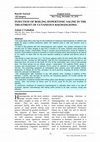
Basrah journal of surgery, Dec 28, 2016
This study deals with a new way for the treatment of cutaneous haemangiomas in children and adult... more This study deals with a new way for the treatment of cutaneous haemangiomas in children and adults by using a boiling hypertonic saline, the material used is safe and nontoxic even if absorbed. A total of 309 patients with 354 haemangiomas were studied. The sample consisted of 233 females and 76 males ranging in age from 2 months to 50 years. Patients were divided into three groups; Group I: observation, Group II: excision and reconstruction, Group III: injection & excision. Each patient in group III received 2-4 shots of boiling saline intra-lesional at an interval of 3-4 weeks, to allow time for the post injection swelling to subside and fibrous tissue to mature. The female to male ratio was 3.1:1. The lesion appears within the first weeks after birth in 189 children (61.3%). Among the 309 patients, 288 (81.4%) haemangiomas were located on the head and neck, 39 (11%) on the trunk, 25 (7%) on the extremities, and 2 (0.6) in the perineal area. The three groups are as follows: group I: observation; 161 patients (52%). group II: excision and reconstruction. 42 patients (13.7); group III: injection & excision, 106 patients (34.3%). The presenting symptoms at consultation were parents worry 200 patients (64%), obstruction of orifices 38 (12.3%), ulceration 32 (10.6 percent), bleeding 26 (8.2%), infection 10(3.2%), and pain 3 (0.8percent). The complications after treatment of the 106 patients were; bleeding 3 patients (2.3%), infection 7 (6.8%), skin necrosis 20 (19.3%); the remaining patients 76 (71.6%) tolerate the injection easily and show no effect. The evaluation of patients treated with boiling saline sclerotherapy is based on improvement of volume, color, and texture as follow, poor 10 (9.1%); good 54 (51.1%); and excellent 42 (39.8%). In conclusion, treatment of cutaneous Haemangioma is indicated when there is no sign of involution. Injection sclerotherapy with boiling saline proved to be safe, nontoxic, cheap and effective.

Annals of Tropical Medicine and Public Health, 2020
Introduction: β Thalassemia is one of the most common hereditary diseases in Iraq. Patients usual... more Introduction: β Thalassemia is one of the most common hereditary diseases in Iraq. Patients usually have severe anemia due to defective haemoglobin synthesis which result in expansion of the bone marrow and distortion of the bones of skull and face. The purpose of the present study is to calculate the anthropometric measurements of the face of adult β thalassemia patients and to identify changes by comparing them with the control group and relevant studies. Material and Methods: Sixty β thalassemia patients and equivalent number of control were enrolled in this study. The age ranged between 20-40 years. The facial variables include sixteen parameters of face, eyes, ears, nose and mouth were calculated. Data analysis was performed by using SPSS version 20 and Chi Square tests. Results: The body mass index (BMI) in β thalassemia patient showed high statistical difference compared to control (P˂0.00). Regarding facial parameters, in female the maxillary depth, the upper lip height and the ear length all had significant variations ( P˂0.05) in thalassemia patients .In male, nasal tip protrusion and Inter canthal distance of the eyes showed significant differences, the length of palpebral fissure in both gender showed significance in thalassemia patients compared with control) . Discussion and conclusion: This study evaluates the facial variations of β thalassemia patients with deformity of the mid face, saddle shape nose and mal-occlusion of teeth could be detected and gender variations were noticed.
Basrah Journal of Surgery, 2014
Basrah Journal of Surgery, 2012
yogenic granuloma was first described in 1897 by two French surgeons, Poncet and Dor 1 who named ... more yogenic granuloma was first described in 1897 by two French surgeons, Poncet and Dor 1 who named this lesion botryomycosis hominis 2 .
Basrah Journal of Surgery, 2005
The Medical Journal of Basrah University, 2013
Basrah Journal of Surgery, 2006
Basrah Journal of Surgery, 2014
Basrah Journal of Surgery, 2009
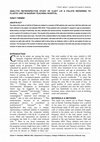
The Medical Journal of Basrah University, 2005
INTRODUCTION left lip & palate are among the most frequent congenital deformities seen. [1] Cleft... more INTRODUCTION left lip & palate are among the most frequent congenital deformities seen. [1] Clefting results when developing facial structures fail to fuse between the fourth and eighth weeks of gestation. [2] This failure is stimulated by genetic & environmental factors. The genes that cause clefting may be passed from either parent. A parent with a cleft has 5% chance of passing the trait. [3] If clefting is associated with a recognized genetic syndrome in which the genes are dominant rather than recessive the chance of inheritance become 50%. [3] Clefting may also result from environmental disruptions in development which may be triggered by: drugs as phenytoin, [4] retinoids [4] and steroids. [5] tobacco smoking by either parent [2,6] alcohol consumption, [4] maternal viral infection as rubella, [3] diet as folic acid deficiency. [4] This malformation, because of its unknown aetiological factors, is considered as multifactorial. [7] Falconer [8] in 1963 hypothesized that each case is unique, representing a combined liability or summation of risk factors. Once the composite liability exceeds a threshold a cleft lip & / or palate will occur. Myth and superstition are reported to accompany the birth of a child with orofacial cleft. [9] Here in our local community the condition is associated with the superstition that the pregnant woman might have seen a rabbit or a hare & the condition is called by lay people and even by doctors as "Rabbit or Hare Lip".
Basrah Journal of Surgery, 2003
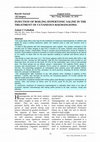
Basrah Journal of Surgery, 2016
This study deals with a new way for the treatment of cutaneous haemangiomas in children and adult... more This study deals with a new way for the treatment of cutaneous haemangiomas in children and adults by using a boiling hypertonic saline, the material used is safe and nontoxic even if absorbed. A total of 309 patients with 354 haemangiomas were studied. The sample consisted of 233 females and 76 males ranging in age from 2 months to 50 years. Patients were divided into three groups; Group I: observation, Group II: excision and reconstruction, Group III: injection & excision. Each patient in group III received 2-4 shots of boiling saline intra-lesional at an interval of 3-4 weeks, to allow time for the post injection swelling to subside and fibrous tissue to mature. The female to male ratio was 3.1:1. The lesion appears within the first weeks after birth in 189 children (61.3%). Among the 309 patients, 288 (81.4%) haemangiomas were located on the head and neck, 39 (11%) on the trunk, 25 (7%) on the extremities, and 2 (0.6) in the perineal area. The three groups are as follows: group I: observation; 161 patients (52%). group II: excision and reconstruction. 42 patients (13.7); group III: injection & excision, 106 patients (34.3%). The presenting symptoms at consultation were parents worry 200 patients (64%), obstruction of orifices 38 (12.3%), ulceration 32 (10.6 percent), bleeding 26 (8.2%), infection 10(3.2%), and pain 3 (0.8percent). The complications after treatment of the 106 patients were; bleeding 3 patients (2.3%), infection 7 (6.8%), skin necrosis 20 (19.3%); the remaining patients 76 (71.6%) tolerate the injection easily and show no effect. The evaluation of patients treated with boiling saline sclerotherapy is based on improvement of volume, color, and texture as follow, poor 10 (9.1%); good 54 (51.1%); and excellent 42 (39.8%). In conclusion, treatment of cutaneous Haemangioma is indicated when there is no sign of involution. Injection sclerotherapy with boiling saline proved to be safe, nontoxic, cheap and effective.
Basrah Journal of Surgery, 2002
Basrah Journal of Surgery, 2008
Journal of Ultrasound in Medicine, 1997




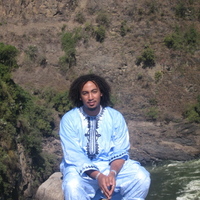
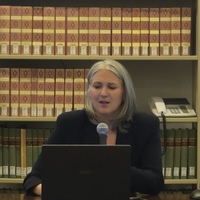
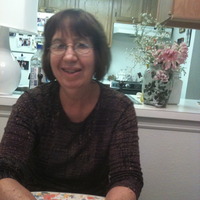
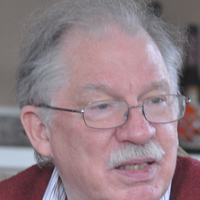



Uploads
Papers by Zuhair Fathallah